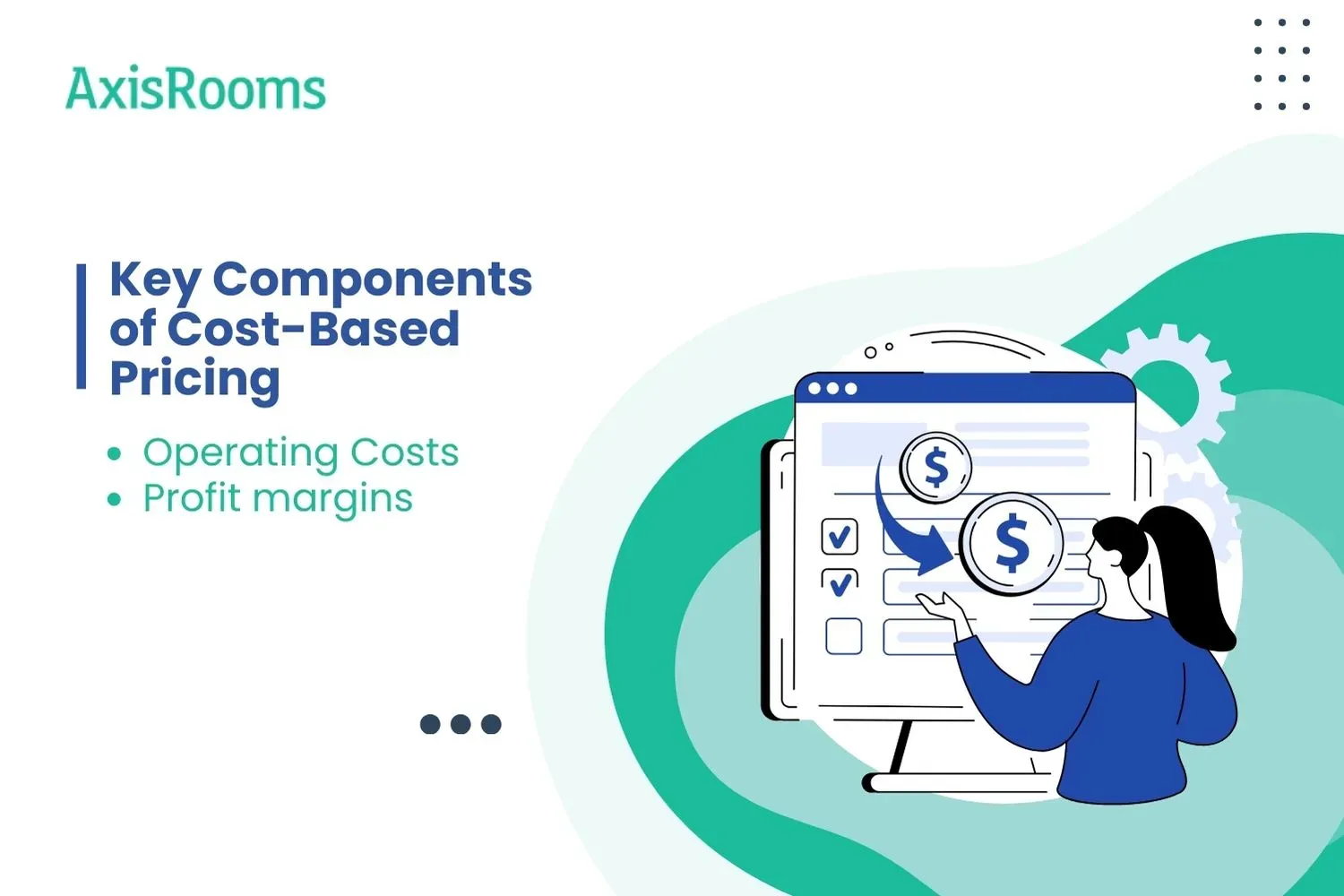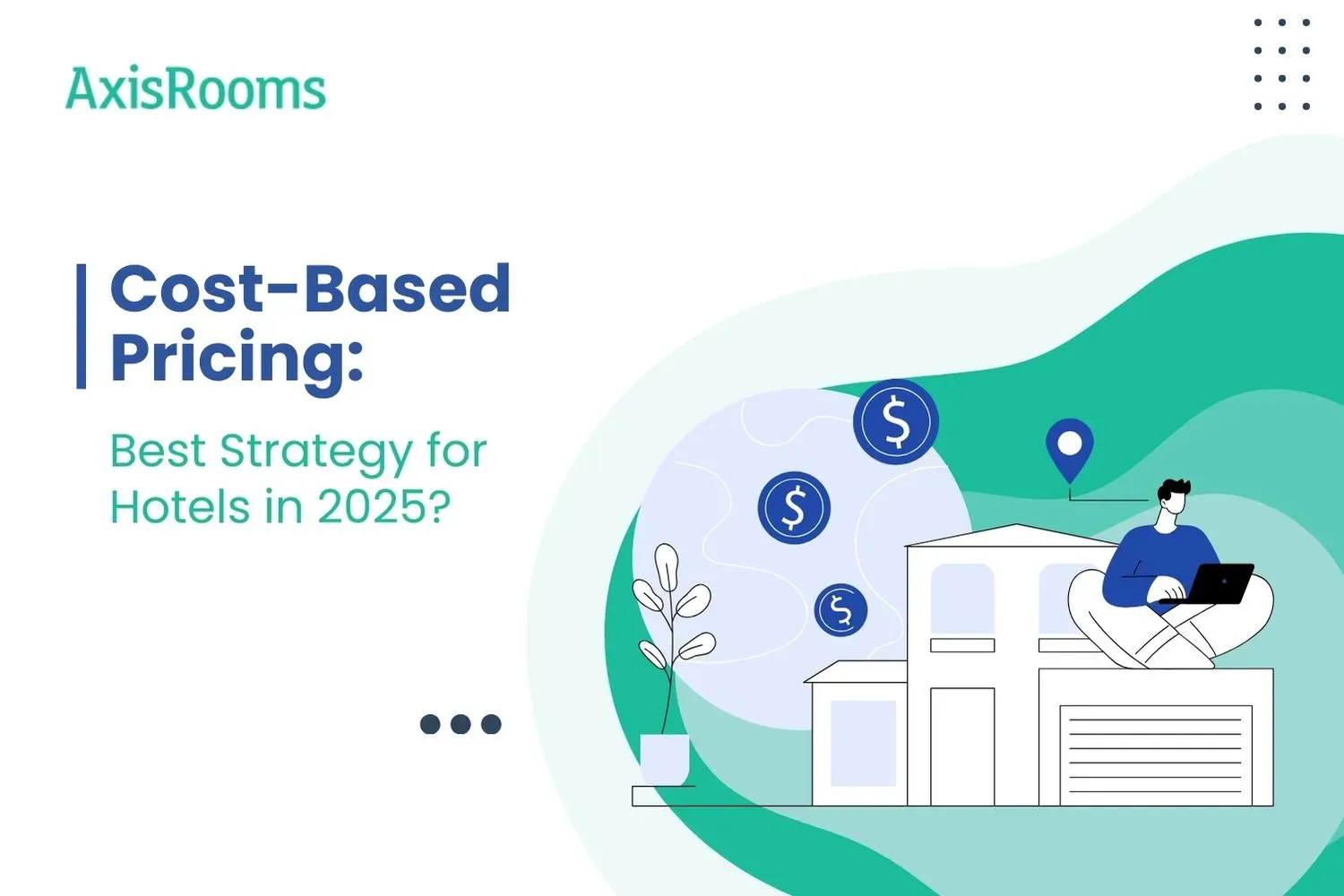Being a hotelier comes with its fair share of challenges, and pricing is often at the top of the list. You’re not just setting a number; you’re navigating guest expectations, fluctuating demand, and operational costs all while ensuring your property remains profitable. Sound familiar?
In the midst of this balancing act, cost-based pricing stands out as a dependable strategy. By grounding your room rates in the actual costs of running your hotel and adding a fair profit margin, it provides a clear and straightforward approach. But here’s the tricky part: how do you make it work during peak seasons or slower months? What about guest willingness to pay or staying competitive in a crowded market?
In this blog, we’ll address these questions head-on. You’ll explore the essentials of cost-based pricing, understand its hidden pitfalls, and see how blending it with advanced revenue management techniques can guide you to make more informed pricing decisions for 2025.
What is Cost-Based Pricing?
Cost-based pricing is a tried-and-true method many hoteliers lean on for financial stability. It’s straightforward and logical: calculate what it costs to run your hotel, add a profit margin, and divide the total across the rooms you sell. Simple, right? But in a rapidly evolving hospitality landscape, where guest preferences shift and market demand fluctuates, relying solely on cost-based pricing might leave you with missed opportunities.
Industry research highlights that while cost-based pricing provides a stable foundation, it should ideally be complemented with dynamic and value-driven approaches to remain competitive in fluctuating markets. For hoteliers, this means using cost-based pricing as a starting point while staying flexible with strategies that respond to guest behavior and market trends.
Here’s the basic formula: Selling Price = Total Costs + (Total Costs × Markup Percentage)
A Quick Example
Let’s say it costs you $50 to clean, maintain, and prepare a single room for a guest. You decide you’d like a 20% profit margin. The selling price would be:
It’s simple math but that’s just the tip of the iceberg. In reality, running a hotel involves much more than cleaning and maintaining rooms. There are utilities to pay, staff salaries, amenities to stock, and even acquisition costs like OTA commissions to factor in.
Why It’s Still Relevant Today
Cost-based pricing might seem like a straightforward approach, but it remains highly practical for smaller hotels or those operating in stable markets where guest demand doesn’t swing wildly. It acts as a dependable starting point—helping you calculate room rates that cover your costs and give you a fair profit. In other words, it keeps you from operating at a loss and provides a solid grasp of your hotel’s financial health.
But here’s the catch: cost-based pricing alone won’t cut it in today’s competitive hospitality world. Guests have become more discerning, and market demand can change in the blink of an eye. To stay ahead, hoteliers need to blend cost-based pricing with other strategies that account for real-time demand, seasonal changes, and guest perceptions of value.
It’s like building the foundation of a house—essential, but only one part of the bigger picture. To truly thrive, you’ll need to layer dynamic and value-driven pricing approaches on top of it.
Cost-Based Pricing vs. Other Pricing Strategies
Cost-based pricing is a solid starting point for pricing rooms, ensuring your hotel covers all costs while making a profit. But is it enough in today’s dynamic market? Let’s explore how it stacks up against other strategies like demand-based and value-based pricing.
Demand-Based Pricing
Demand-based pricing is all about flexibility. It allows you to adjust your room rates based on what’s happening in the market—be it a surge in demand during the holiday season, a local festival, or even a sudden dull moment during the off-season. Instead of sticking to a fixed rate, this approach lets you capitalize on high-demand periods by charging premium prices and still remain competitive when demand dips by offering more attractive rates.
Think about it: during peak seasons, like summer vacations or major events in your area, guests expect to pay a bit more for a room. On the flip side, during quieter months, lowering your rates slightly can help keep your occupancy levels steady. Tools that track real-time market demand and guest behavior make this even more effective, giving you the insights to fine-tune your pricing without the guesswork.
This strategy gives you the agility to respond to changing conditions, helping you maximize revenue during busy times while maintaining a steady flow of bookings when things slow down. It’s like adjusting your sails to catch the wind—keeping you on course no matter the weather.
Value-Based Pricing
Pairing value-based pricing with AxisRooms’ Channel Manager ensures your premium rooms are displayed prominently on OTAs and direct booking platforms, emphasizing your property’s unique offerings. This approach helps boutique and luxury properties justify higher prices, but understanding guest expectations is crucial.
Blending Strategies for Success
While cost-based pricing provides stability, combining it with demand-based and value-based strategies gives your hotel the edge. Use cost-based pricing as your foundation, demand-based pricing to adapt to market changes, and value-based pricing to showcase your property’s unique appeal.
Key Components of Cost-Based Pricing
Cost-based pricing revolves around three main elements: operating costs, profit margin, and room rates. Each plays a critical role in setting prices that ensure profitability while keeping operations sustainable.

1. Operating Costs
Every hotel has two main types of costs that affect pricing decisions:
- Fixed Costs: These are the predictable expenses that stay the same no matter how many guests you have. Think rent, salaries, insurance, and utilities. Whether your rooms are full or empty, these bills will always come knocking.
- Variable Costs: These costs grow as your occupancy increases. Amenities like toiletries, laundry services, or commissions to booking platforms fall under this category. For instance, the more guests you host, the more you’ll spend on restocking supplies or cleaning services.
Understanding the difference between fixed and variable costs helps you calculate the baseline expenses for each room.
2. Profit Margin
Once you’ve worked out your costs, it’s time to decide how much profit you want to make. This is where the markup percentage comes in. Let’s say the total cost to service a room is $70, and you’d like to add 20% as profit. Your price becomes:
This margin not only covers your expenses but gives you room to reinvest in improving guest experiences or tackling unforeseen expenses.
Advantages of Cost-Based Pricing
Cost-based pricing works for hoteliers who prefer a straightforward, no-frills approach to pricing. It’s like having a reliable recipe for your hotel rates: simple, consistent, and clear. Here’s why many choose this method:
1. Simplicity
If you’ve ever felt overwhelmed by complicated pricing models, cost-based pricing might feel like a breath of fresh air. All you need to do is calculate your costs and add a fair markup. This approach works particularly well for smaller hotels or those without access to fancy pricing tools.
2. Predictable Profits
With cost-based pricing, you’re setting rates that reflect your expenses and include a buffer for profit. While it might not make you millions overnight, it can help keep your finances steady, even during slower seasons.
3. Transparent Decisions
This method also makes it easy to explain how your rates are determined. If a guest or investor ever questions your pricing, you can clearly show how the numbers add up.
Recommendations and Best Practices
1. Hybrid Approach
A purely cost-based pricing strategy can leave revenue on the table, especially during peak demand periods. Combining cost-based pricing with demand-driven or dynamic pricing helps strike a balance between covering costs and maximizing profitability.
2. Regular Cost Reviews
The hospitality market is ever-changing, and so are your expenses. Regularly reviewing fixed and variable costs is key to keeping your pricing in line with your current financial landscape. Unexpected costs like energy price increases or emergency maintenance can quickly impact your bottom line, so they must be factored into your room rates. Additionally, maintenance expenses are a substantial part of hotel operating costs. Reports indicate that maintenance budgets can consume 4-6% of total revenues, highlighting the need for diligent cost management in this area.
By consistently monitoring these expenses, you can make informed decisions to adjust your room rates appropriately, ensuring that your hotel remains profitable despite the dynamic nature of operating costs.
3. Use of Technology
Manually updating prices or tracking costs can be time-consuming and error-prone. Technology bridges the gap by automating data collection and integrating market insights into your pricing strategy.
Specific Hotel Industry Insights
When applying cost-based pricing in the hospitality industry, understanding the nuances of your property and market is crucial. Here are two key insights to refine your approach:
1. Seasonality
Seasonality plays a significant role in shaping demand, and your pricing strategy must account for it. During high-demand seasons like summer vacations or holidays, room rates can include higher markups to maximize revenue. Conversely, during low-demand periods, a more conservative markup helps maintain occupancy without sacrificing competitiveness.
For instance, research from Statista shows that global hotel occupancy rates typically peak in July and August, reaching upwards of 70% in many regions, while dipping to as low as 50% during off-peak months like January. Adapting cost-based pricing with seasonal adjustments ensures your rates reflect these fluctuations effectively.
Specific Hotel Industry Insights
When applying cost-based pricing in the hospitality industry, understanding the nuances of your property and market is crucial. Here are two key insights to refine your approach:
2. Room Types
Room differentiation is another critical aspect. Larger hotels with multiple room categories standard, deluxe, or suite should customize pricing based on the size, view, and additional amenities. For example, rooms with ocean views or added perks like in-room dining justify a higher markup compared to standard options.
A study by CBRE Hotels Research indicates that properties offering tiered room pricing see up to 20% more revenue per available room (RevPAR) compared to hotels with flat pricing structures. This demonstrates the importance of aligning your cost-based pricing with room features to maximize revenue potential.
To simplify this process, tools like AxisRooms’ Revenue Management System can help you automate tiered pricing strategies. By analyzing booking trends, room performance, and guest preferences, the system allows you to set optimal rates for different room categories, ensuring each room type contributes to your revenue goals.
Conclusion
To stay competitive and maximize revenue, hoteliers need to go beyond cost-based pricing and incorporate other strategies into their approach. Demand-based pricing allows you to adjust rates according to seasonal trends, local events, and fluctuations in demand, helping you make the most of high-occupancy periods. Meanwhile, value-based pricing focuses on showcasing what makes your property special—whether it’s premium amenities, breathtaking views, or a personalized guest experience—to justify higher rates.
Cost-based pricing works best when it’s part of a hybrid strategy. This approach gives you the flexibility to adapt to changing market conditions, meet guest expectations, and maintain steady financial growth. By combining actionable insights with the right tools, you can create a pricing strategy that does more than just cover costs—it helps your hotel thrive in the long run.
Think of this as a roadmap for smarter pricing decisions in 2025 and beyond. It’s not about choosing one method over another; it’s about blending strategies to ensure your business stays profitable and competitive in an ever-changing market.


